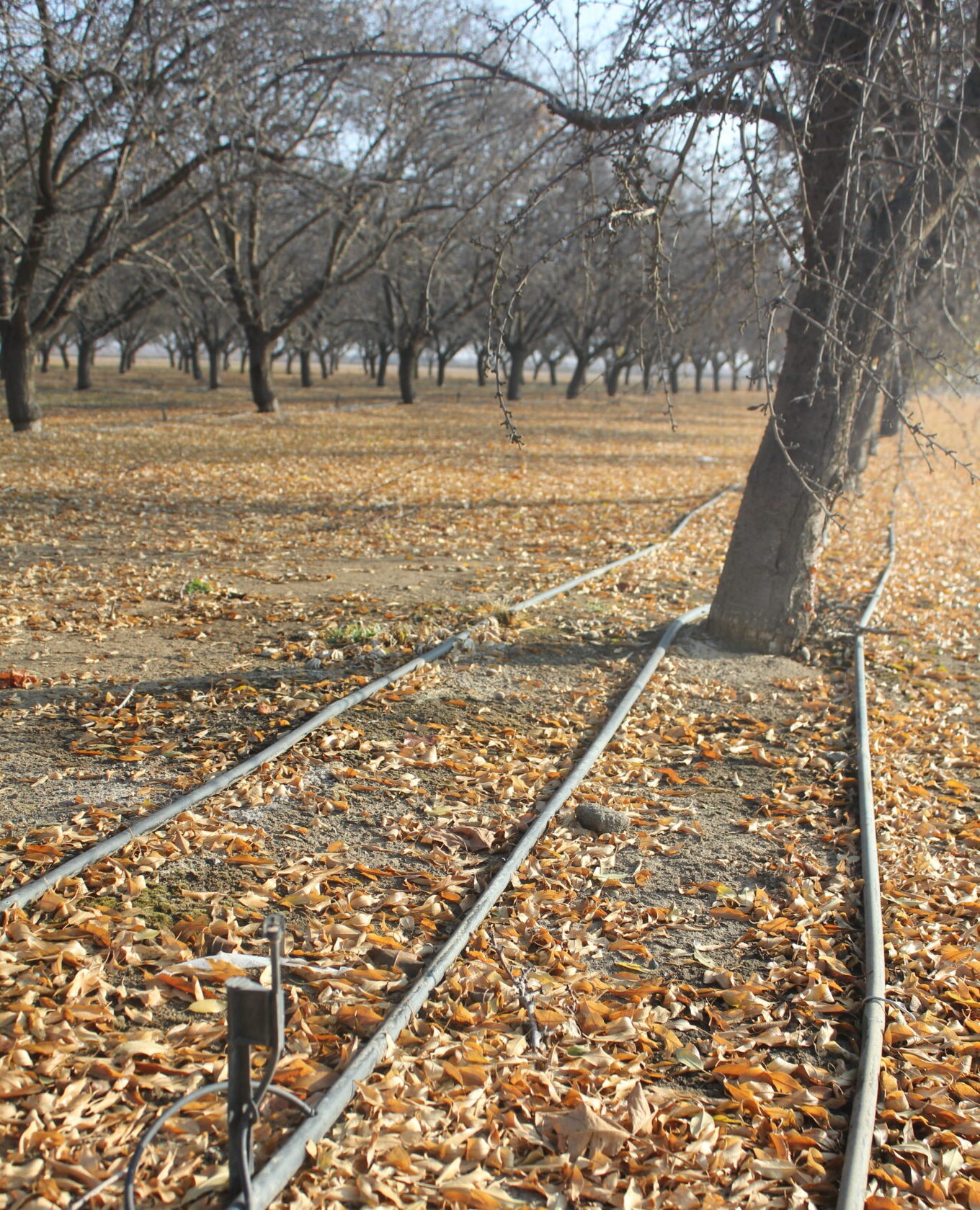
Almond growers determined to get ‘more crop per drop’ heard some new takes on smart irrigation technology at the virtual Almond Conference from a panel of researchers and scientists.
“Smart irrigation management will consist of a combination of hardware and software that will allow almond growers to make precision irrigation decisions,” said Sebastian Saa, associate director of Agricultural Research for the Almond Board of California and moderator of the conference session.
Panelists included Ken Shackel, UC Davis; Andrew McElrone, USDA research scientist based at UC Davis; Forrest Melton, NASA Ames and CSU Monterey Bay; and UC Davis researcher Isaya Kisekka.
Delayed Irrigation
Research done on initiating irrigation in walnuts has application in almond production, Shackel confirmed. Recent field trials in Tehama and Stanislaus counties studied effects on mature almond trees when initial irrigation was delayed on two ET (evapotranspiration) levels.
As previously found in walnuts, the almond trial showed that delaying the first irrigation does result in some tree stress during the delay, but does not result in more stress at harvest. Shackel said that due to differences in location and soils, applying full ET may not prevent substantial water stress in one location, and applying a deficit ET may only cause mild to moderate stress in another location.
“We have all been taught that ET and stress go hand in hand, but it is clear that soils and orchard conditions make a difference. Just because you match ET doesn’t mean you won’t have tree stress, and falling behind ET doesn’t mean there will be a lot of tree stress.”
Shackel said more research is needed to try and figure out if a prediction can be made, given soil and orchard conditions, for how ET is going to result in terms of stress.
As was previously found in walnut irrigation research, once the first stem water potential (SWP) threshold is reached, the next is not far behind. Shackel said waiting for a particular SWP trigger may not be as important as just waiting for ‘trees to just start drying out.’
Improving on ET
McElrone’s presentation included new information on ET-based irrigation management.
“Ultimately, what we are trying to do is estimate the exact amount of water needed in the system to match water losses,” he said.
With ET-based irrigation management, McElrone said the goal is to know how much water to apply, when and where in the orchard.
Looking to improve on the traditional ET-based irrigation management with information from CIMIS weather stations, the new ET models are measuring radiant energy collected by trees and orchard surfaces. The goal of these newer ET measurement collections is to develop inexpensive, site-specific measurements of actual crop water use.
Other innovations in measuring crop water use is the GrapeX or Grape Remote Sensing Atmospheric Profile and Evapotranspiration experiment. This is an effort to refine and apply a multi-scale remote sensing ET toolkit for mapping crop water use and stress for improved irrigation management in California. Work is being done to translate this for use in almonds, McElrone said. Methods will include satellite imagery as well as ground truthing with use of sensors. Parsing transpiration from ET is being done with use of drone imaging.
With funding from a CDFA Specialty Crop block grant, the Tree Crop Remote Sensing of ET, or T-Rex, is developing low-cost and accessible irrigation management tools for almonds.
Melton explained OPEN ET and the effort to fill the biggest gap in water management. The challenge, Melton said, is to secure an accurate estimation of national scale near-real-time crop ET with satellite data. With better information on when to irrigate, water will be saved.
OPEN ET is a new web-based platform that will soon be putting NASA data in the hands of farmers, water managers and conservation groups to accelerate improvements and innovations in water management. The platform uses publicly available data and open-source models to provide satellite-based information on ET in areas as small as a quarter of an acre and at daily, monthly and yearly intervals.
OPEN ET primarily uses satellite datasets from the Landsat program, which is a partnership between NASA and the U.S. Geological Survey. Additional data comes from NASA’s Terra and Aqua satellites, the National Oceanic and Atmospheric Administration (NOAA) GOES series of satellites and others.
Because the OPEN ET system uses open-source software and open data sources, it will help water managers establish an agreed upon measure of ET across agricultural areas, said Melton. Different estimates of ET have previously been a source of confusion for water managers, he said, explaining that water users and managers currently have to evaluate a variety of methodologies to measure water use and ET, which often leads to different numbers and debates over accuracy.
New Irrigation Trials
Kisekka, associate professor in Biological and Agricultural Engineering at UC Davis, outlined irrigation trials looking at water use in young almond orchards, site specific irrigation management by variety and zone irrigation management based on soil type.
Canopy size varies according to tree age, and Kisekka’s study showed crop water use by young trees may also vary, particularly during the summer months. Significantly more water is used by fourth leaf trees than second leaf trees, he said, but there is much less difference in water use between fifth and fourth leaf trees.
Irrigation management strategies for different almond varieties did not show significant differences in tree response, Kisekka said.
A trial at Nickels Soil Lab with different irrigation strategies based on soil types showed stem water potential was not substantially different among varieties.
Kisekka summed up with evaluation of emerging technologies to determine soil and plant water status for data-driven irrigation management in almonds. The trials used large-area cosmic ray soil moisture sensing to collect data across the orchard rather than one site. Automated microtensiometers were used to measure SWP in young trees as an alternative to using a pressure bomb. Kisekka said the sensors provided data similar to a pressure bomb, with less labor involved.















